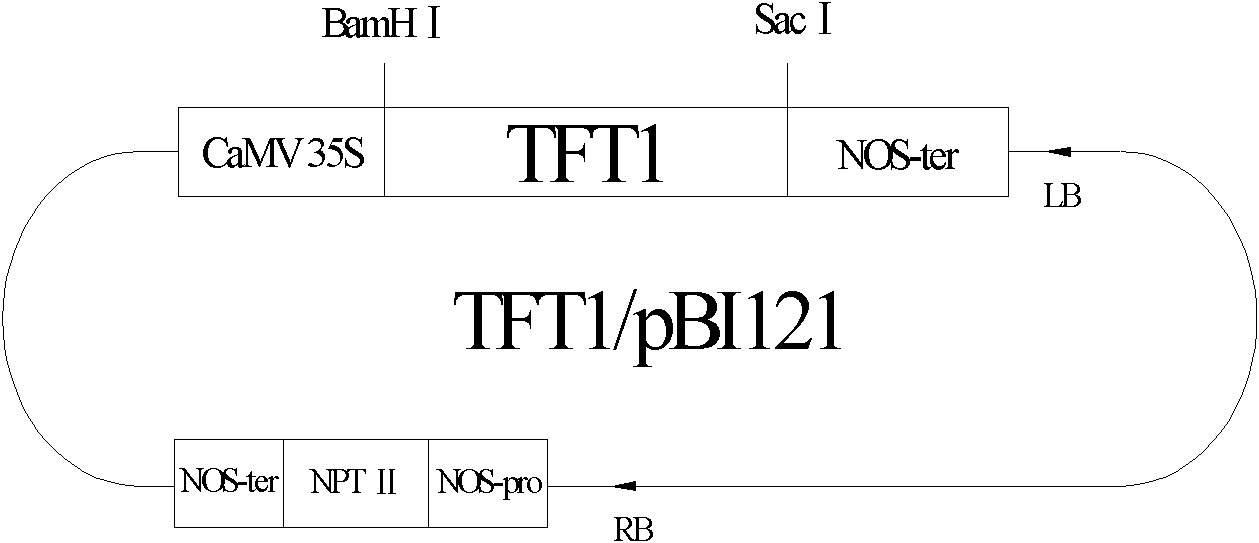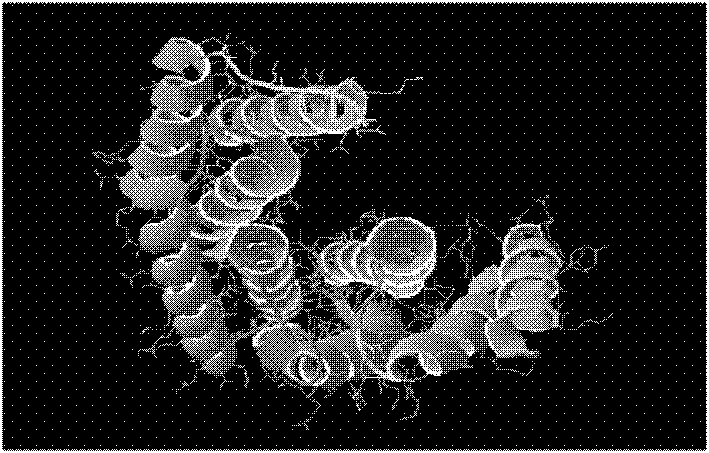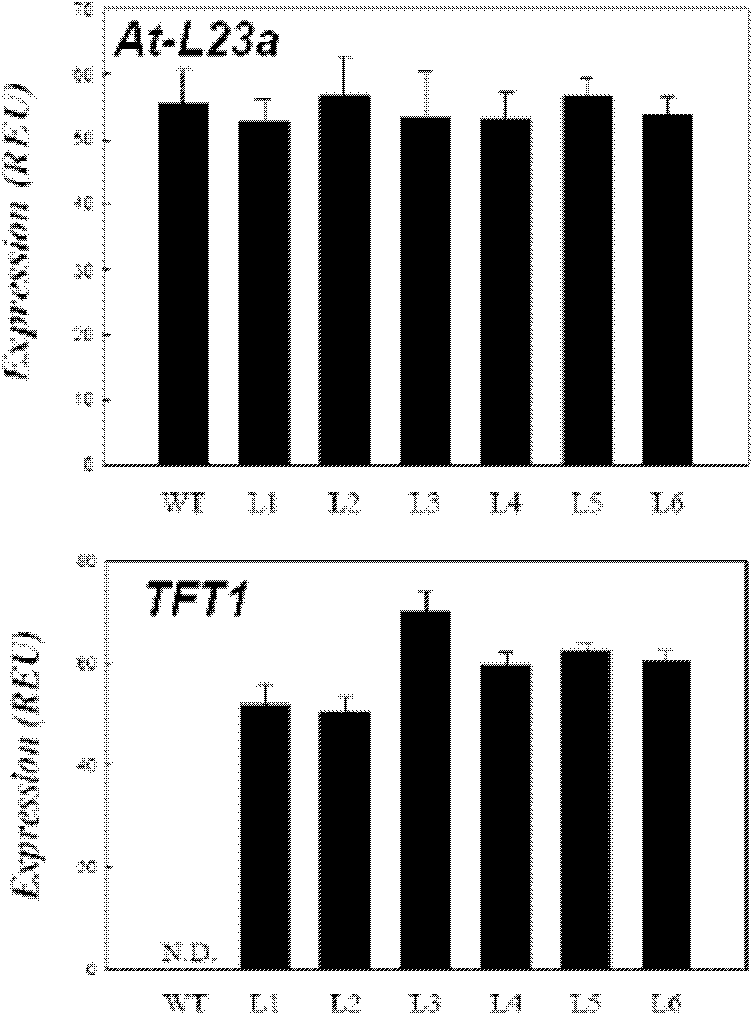Application of tomato TFT1 gene to improving salt tolerance of crops
A technology of salt tolerance and genetics, applied in the field of genetic engineering, can solve problems affecting tomato yield and quality, and achieve the effect of improving salt tolerance
- Summary
- Abstract
- Description
- Claims
- Application Information
AI Technical Summary
Problems solved by technology
Method used
Image
Examples
Embodiment 1
[0012] Materials and Methods
[0013] Plant material, growth state, salt stress treatment
[0014] The way we cultivate tomatoes is hydroponics, and the nutrient solution is 1 / 5 Hoagland. We used MS plates (0.8% agar and 3% sucrose) to grow Arabidopsis. The treatments were 0, 80, 100, 115, 130 and 150 mM NaCl. We do germination test with about 100 Arabidopsis seeds, count them 5 days after sowing on MS plates, and the germination is defined as the radicle piercing the seed coat. For the growth test, we took the Arabidopsis thaliana with consistent growth after 5 days of normal germination as the material, moved it to the MS plate and grew it for 10 days, took the Arabidopsis plants (15 days old) and fixed them in liquid nitrogen, and stored them in - Refrigerate at 80°C for analysis. Each experiment was repeated three times, and 10 Arabidopsis plants were taken each time. In addition, each experiment was replicated at least twice (biological replicates).
[0015] Constru...
PUM
 Login to View More
Login to View More Abstract
Description
Claims
Application Information
 Login to View More
Login to View More - R&D
- Intellectual Property
- Life Sciences
- Materials
- Tech Scout
- Unparalleled Data Quality
- Higher Quality Content
- 60% Fewer Hallucinations
Browse by: Latest US Patents, China's latest patents, Technical Efficacy Thesaurus, Application Domain, Technology Topic, Popular Technical Reports.
© 2025 PatSnap. All rights reserved.Legal|Privacy policy|Modern Slavery Act Transparency Statement|Sitemap|About US| Contact US: help@patsnap.com



